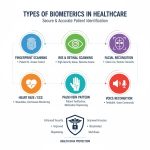Key Takeaways
- The global biopesticides market is valued at USD 8.6 billion in 2024 and is projected to reach USD 40.3 billion by 2035, growing at a CAGR of 15.10%.
- Rising demand for organic food and sustainable agriculture is a major driver for biopesticides adoption.
- Market segmentation includes product type, source, crop type, formulation, and region.
- North America and Europe lead the market, but Asia-Pacific is emerging rapidly.
- Key players are investing in R&D, partnerships, and product launches to strengthen their market position.
- Regulatory support and consumer awareness are fueling market growth.
- Challenges include regulatory hurdles, limited shelf life, and farmer awareness.
- Technological advancements and integrated pest management (IPM) are shaping market trends.
- Recent developments include mergers, acquisitions, and new product launches.
- The market is highly competitive, with both global giants and innovative startups.
Market Overview
The biopesticides market is experiencing a remarkable transformation, driven by the global shift towards sustainable agriculture and the increasing demand for organic food products. In 2024, the market is valued at USD 8.6 billion, and analysts project it will soar to USD 40.3 billion by 2035, reflecting a robust CAGR of 15.10%. This growth is underpinned by a confluence of factors, including heightened consumer awareness about the adverse effects of chemical pesticides, stringent regulatory frameworks, and the rising popularity of eco-friendly farming practices. Biopesticides, derived from natural materials such as animals, plants, bacteria, and certain minerals, offer a safer alternative to conventional chemical pesticides. They not only help in reducing crop losses but also minimize environmental pollution and health risks associated with chemical residues. As the world grapples with the challenges of food security and environmental sustainability, biopesticides are emerging as a vital tool in the agricultural arsenal. The market is witnessing increased investments in research and development, leading to the introduction of innovative products that are more effective and easier to use. Furthermore, government initiatives promoting organic farming and integrated pest management (IPM) are providing a significant boost to market growth. The biopesticides market is poised for exponential growth, with opportunities spanning across developed and developing regions.
Get a Sample Copy:- https://www.vantagemarketresearch.com/biopesticides-market-1854/request-sample
Market Segmentation Analysis
By Crop Type
- Cereal & Grains
- Oilseeds & Pulses
- Fruits & Vegetables
- Other Crop Types
By Formulation Type
- Liquid Formulation (75.7%)
- Dry Formulation (24.3%)
By Source
- Microbial Pesticides
- Biochemical Pesticides
- Plant-Incorporated Protectants
By Mode of Application
- Seed Treatment
- Soil Treatment
- Foliar Spray
- Other Modes of Application
By Product
- Bio Insecticides
- Bio Fungicides
- Bio Herbicides
- Bionematicides
- Others (including Plant Growth Regulators)
The biopesticides market is segmented based on product type, source, crop type, formulation, and region. By product type, the market is divided into bioinsecticides, biofungicides, bionematicides, and others. Bioinsecticides hold the largest share, owing to their effectiveness in controlling a wide range of insect pests. By source, biopesticides are categorized into microbial, biochemical, and plant-incorporated protectants (PIPs). Microbial biopesticides, derived from bacteria, fungi, and viruses, dominate the market due to their broad-spectrum activity and ease of application. Crop type segmentation includes cereals & grains, fruits & vegetables, oilseeds & pulses, and others. Fruits and vegetables account for the largest market share, driven by the high value and perishability of these crops. Formulation-wise, biopesticides are available in liquid, dry, and granule forms, catering to diverse application needs. Regionally, the market is analyzed across North America, Europe, Asia-Pacific, Latin America, and the Middle East & Africa. Each segment presents unique growth opportunities and challenges, influenced by local agricultural practices, regulatory environments, and consumer preferences.
Drivers
Several factors are propelling the growth of the biopesticides market. The most significant driver is the escalating demand for organic and residue-free food products, as consumers become increasingly health-conscious. Stringent regulations on the use of chemical pesticides, especially in developed countries, are compelling farmers to adopt safer alternatives. Environmental concerns, such as soil degradation, water contamination, and loss of biodiversity, are also pushing the agricultural sector towards sustainable solutions. Additionally, government support in the form of subsidies, training programs, and awareness campaigns is encouraging the adoption of biopesticides. The integration of biopesticides into integrated pest management (IPM) programs is further enhancing their acceptance among farmers.
Restraints
Despite the promising growth prospects, the biopesticides market faces several challenges. Regulatory hurdles, including lengthy approval processes and varying standards across regions, can delay product launches and increase costs. Limited shelf life and sensitivity to environmental conditions can affect the efficacy of biopesticides, posing a challenge for storage and transportation. Lack of awareness and technical knowledge among farmers, particularly in developing regions, hampers market penetration. Additionally, the relatively higher cost of biopesticides compared to conventional pesticides can be a deterrent for small-scale farmers.
Growth Factors
The biopesticides market is buoyed by several growth factors. Technological advancements in formulation and delivery systems are enhancing the effectiveness and ease of use of biopesticides. The rising trend of organic farming, supported by favorable government policies and certification programs, is expanding the market base. Increasing investments in research and development are leading to the discovery of new active ingredients and the development of broad-spectrum products. Strategic collaborations between key players, research institutions, and government agencies are fostering innovation and market expansion. The growing emphasis on sustainable agriculture and the need to meet global food security challenges are driving the adoption of biopesticides. Furthermore, the integration of digital technologies, such as precision agriculture and remote sensing, is enabling targeted application and monitoring, thereby improving the efficiency and cost-effectiveness of biopesticides.
Emerging Trends
The biopesticides market is witnessing several emerging trends that are shaping its future trajectory. One notable trend is the increasing adoption of integrated pest management (IPM) practices, which combine biopesticides with other control methods for holistic pest management. The development of next-generation biopesticides, such as RNAi-based products and microbial consortia, is expanding the range of target pests and diseases. The use of artificial intelligence and data analytics in pest monitoring and prediction is enabling more precise and timely application of biopesticides. There is also a growing focus on developing biopesticides for specialty crops and protected cultivation systems, such as greenhouses and vertical farms. Sustainability certifications and eco-labeling are gaining traction, influencing consumer preferences and driving market growth.
Regional Analysis
Regionally, North America and Europe are the frontrunners in the biopesticides market, driven by stringent regulatory frameworks, high consumer awareness, and advanced agricultural practices. The United States holds the largest market share, supported by robust R&D activities and a strong presence of key players. Europe follows closely, with countries like France, Germany, and Spain leading the adoption of biopesticides, particularly in organic farming. The Asia-Pacific region is emerging as a lucrative market, fueled by the rapid expansion of organic agriculture, increasing government support, and rising awareness among farmers. Countries such as India, China, and Australia are witnessing significant growth in biopesticides adoption. Latin America and the Middle East & Africa are also showing promising potential, driven by the need to enhance crop productivity and address environmental concerns. Each region presents unique opportunities and challenges, influenced by local agricultural practices, regulatory environments, and market dynamics.
Competitive Landscape
- Certis USA LLC
- Syngenta International AG
- Nufarm Ltd
- Bayer AG
- Novozymes A/S
- Gujarat State Fertilizers & Chemicals Ltd.
- FMC Corporation
- Agri Life
- Symborg S.L.
- Biotech International Limited
- T. Stanes & Company Limited
- Summit Chemical Inc.
- BioSafe Systems LLC
The biopesticides market is highly competitive, characterized by the presence of both global giants and innovative startups. Key players such as Bayer CropScience, Syngenta, BASF, Marrone Bio Innovations, and Certis USA are investing heavily in research and development to expand their product portfolios and enhance their market presence. These companies are focusing on strategic partnerships, mergers and acquisitions, and new product launches to gain a competitive edge. Startups and small-scale manufacturers are also making significant contributions, particularly in niche segments and regional markets. The competitive landscape is further shaped by collaborations with research institutions and government agencies, aimed at developing innovative solutions and addressing regulatory challenges. Intellectual property rights and patent protection play a crucial role in maintaining market leadership. The market is witnessing increased investment in marketing and distribution networks to reach a wider customer base. As the demand for sustainable agriculture solutions continues to rise, competition is expected to intensify, driving further innovation and market growth.
Recent Developments in the Biopesticides Market
- Bayer CropScience launched a new microbial-based biofungicide for fruits and vegetables in 2024.
- Marrone Bio Innovations announced a strategic partnership with a leading agri-tech company to develop next-generation biopesticides.
- Syngenta acquired a biopesticide startup specializing in RNAi technology.
- BASF expanded its biopesticide production facility in Europe to meet growing demand.
- Certis USA introduced a new line of biopesticides for greenhouse crops.
- Several companies received regulatory approvals for new biopesticide formulations in key markets.
- Increased investment in R&D for developing broad-spectrum and multi-crop biopesticides.
- Launch of digital platforms for precision application and monitoring of biopesticides.
- Expansion of distribution networks in emerging markets, particularly in Asia-Pacific and Latin America.
- Growing collaborations between industry players and research institutions for product innovation.
FAQs
- What are biopesticides and how do they differ from chemical pesticides?
- What is the current size and projected growth of the global biopesticides market?
- What are the key drivers fueling the growth of the biopesticides market?
- What challenges are restraining the adoption of biopesticides?
- How is the biopesticides market segmented?
- Which regions are leading the biopesticides market and why?
- What are the latest trends in the biopesticides industry?
- Who are the major players in the biopesticides market?
- What recent developments have taken place in the biopesticides market?
- How are government policies and regulations impacting the biopesticides market?
![[Market Research Reports] – Research Google News Blog | VMR.Biz](https://www.vmr.biz/wp-content/uploads/2022/12/logo-removebg-preview.png)











